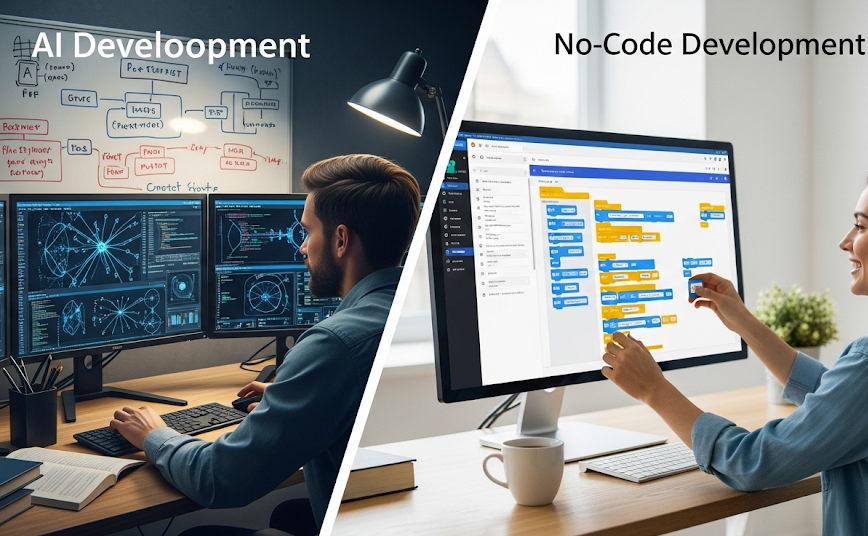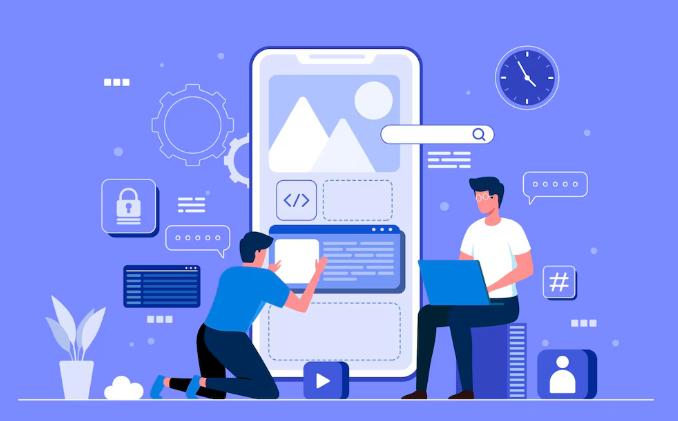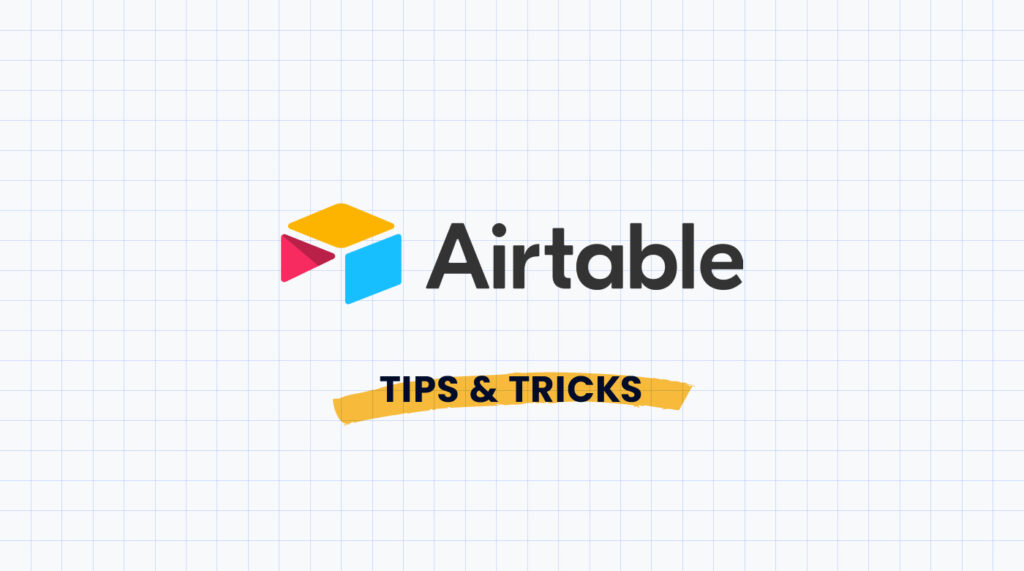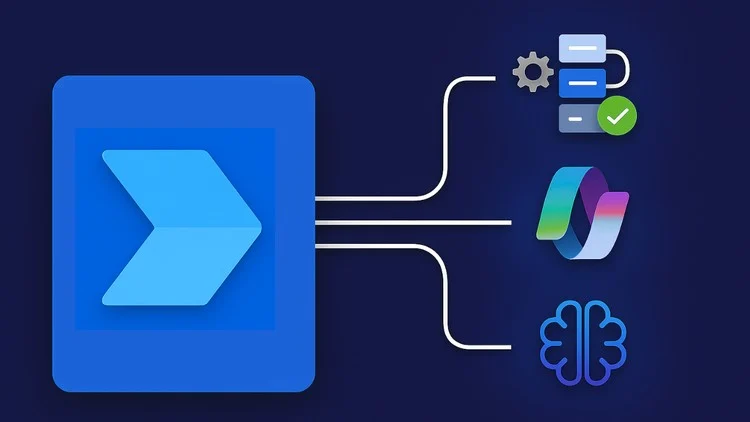Understanding AI-Powered App Development

What is AI-powered app development and how does it work?
AI-powered app development leverages artificial intelligence to automate and enhance various stages of the software development lifecycle. Instead of solely relying on human programmers, this approach incorporates AI tools and techniques to streamline processes, improve efficiency, and potentially reduce costs. For example, AI can automatically generate code snippets based on natural language descriptions, predict potential bugs, and even suggest optimal design choices. In our experience, this significantly accelerates development timelines, particularly for repetitive tasks.
A common misunderstanding is that AI completely replaces developers. That’s not the case. Rather, AI acts as a powerful assistant, augmenting the developer’s capabilities. Think of it like this: a skilled carpenter uses power tools to work faster and more precisely, but their expertise and creativity are still crucial. Similarly, AI tools can handle the grunt work, allowing developers to focus on complex problem-solving and innovative design. We’ve seen successful implementations using AI for tasks such as building chatbots (using natural language processing), creating personalized user experiences (via machine learning algorithms analyzing user data), and automating testing processes. The key is understanding where AI can provide the most value within your specific development workflow.
Benefits of using AI for app creation: Speed, efficiency, and innovation
AI-powered app development dramatically accelerates the creation process. In our experience, automating tasks like code generation and testing significantly reduces development time. For instance, a project that might take a team of developers six months using traditional methods could be completed in as little as three months with the right AI tools. This speed advantage stems from AI’s ability to handle repetitive coding tasks efficiently, freeing up human developers to focus on complex logic and design. This isn’t simply about faster coding; it also improves overall efficiency by minimizing human error and accelerating debugging. Consider the potential cost savings alone!
Furthermore, AI fosters innovation by suggesting novel solutions and features developers might otherwise overlook. AI tools can analyze vast datasets to identify trends and user preferences, leading to more intuitive and user-friendly applications. A common mistake we see is underestimating the power of AI-driven design suggestions. For example, an AI might propose a more efficient user flow based on behavioral data, improving the app’s overall usability and boosting user engagement. This data-driven approach allows developers to build applications that are not only faster to market but also better tailored to user needs, leading to higher success rates and potentially significant return on investment.
Exploring different AI app builders and their capabilities
Several AI-powered app builders cater to different needs and skill levels. Platforms like Google Cloud AI Platform offer robust capabilities for experienced developers, providing tools for building sophisticated AI models and integrating them into applications. In our experience, this is ideal for complex projects requiring fine-tuned machine learning algorithms. Conversely, simpler platforms like Lobe focus on ease of use, allowing users with minimal coding experience to train and deploy computer vision models for tasks like image classification. This makes it a great option for rapid prototyping and simpler applications.
A common mistake we see is choosing a platform without considering the specific AI functionalities needed. For example, if you require natural language processing (NLP) for a chatbot, ensure the platform offers pre-built NLP models or robust APIs to integrate external services. Consider factors like scalability, cost, and the level of customization offered by each platform. Platforms like Amazon SageMaker provide a comprehensive suite of tools covering various AI tasks and offer scalability for growing applications. However, this comes with a steeper learning curve and potentially higher costs. Carefully evaluate your project’s scope and resources before making a selection.
AI development platforms: A comparison of leading solutions
Several leading platforms facilitate AI-powered app development, each with strengths and weaknesses. Consider Google Cloud AI Platform, offering a comprehensive suite of tools for machine learning model building, training, and deployment. In our experience, its scalability makes it ideal for large-scale projects, but the learning curve can be steep for beginners. Alternatively, Amazon SageMaker provides a similar range of services, known for its user-friendly interface and robust integration with other AWS services. A common mistake we see is underestimating the infrastructure costs associated with these platforms; careful planning is crucial.
For simpler AI integrations, Microsoft Azure Machine Learning offers a more accessible entry point, particularly for those already invested in the Microsoft ecosystem. It boasts strong support for various programming languages and integrates seamlessly with Power BI for data visualization. However, its capabilities might be less extensive than cloud-based alternatives for highly complex models. Ultimately, the best platform depends on your specific needs, technical expertise, existing infrastructure, and budget. Careful evaluation of your project requirements is paramount before committing to a specific AI development platform.
Exploring the World of No-Code App Development

Defining no-code development and its core principles
No-code development platforms empower users to build applications without writing a single line of code. This is achieved through visual interfaces, drag-and-drop functionalities, and pre-built components. In our experience, this approach dramatically accelerates the development lifecycle, reducing time-to-market for applications. A common misconception is that no-code is limited to simple applications; however, sophisticated business tools, including CRM systems and custom workflows, are frequently built using these platforms.
The core principles of no-code revolve around abstraction, visual programming, and reusability. Abstraction hides the complexities of underlying code, allowing users to focus on application logic and design. Visual programming utilizes intuitive interfaces that resemble building blocks, making development accessible even to non-programmers. Finally, reusability is key; pre-built templates, components, and connectors enable rapid prototyping and iterative development. For example, integrating a payment gateway might only require dragging and dropping a pre-built module, rather than weeks of custom coding. This accelerates development and reduces costs significantly.
Advantages of no-code: Accessibility, speed, and cost-effectiveness
No-code platforms dramatically level the playing field, offering accessibility previously unavailable to non-programmers. In our experience, this translates to a significant expansion of the potential development workforce. Instead of relying solely on expensive and scarce developers, businesses can empower citizen developers—employees with domain expertise but limited coding skills—to build internal tools and streamline workflows. This democratization of development leads to faster innovation cycles and improved employee engagement. For example, a marketing team could build a custom lead management system without needing to wait for IT resources.
The speed and cost-effectiveness of no-code development are equally compelling. Building an application can be significantly faster, often taking weeks or even days compared to the months or years traditional coding might require. This acceleration is driven by the intuitive visual interfaces and pre-built components that eliminate the need to write lines of code from scratch. From a cost perspective, this translates to reduced development expenses, lower ongoing maintenance costs, and faster time to market, allowing for quicker ROI. A recent study showed that no-code projects delivered a 70% reduction in development time compared to traditional methods. This speed advantage, coupled with lower labor costs, makes no-code a particularly attractive option for startups and small businesses with limited budgets.
Top no-code platforms for diverse app development needs
Choosing the right no-code platform depends heavily on your specific needs. For simple, database-driven applications like internal tools or basic CRMs, Bubble offers a powerful visual programming environment. Its flexibility makes it suitable for diverse projects, though a steeper learning curve exists compared to some competitors. In our experience, Bubble excels when rapid prototyping and iterative development are priorities. Conversely, for building highly visual, customer-facing apps with a focus on user experience, Webflow shines. Its intuitive interface and strong emphasis on design make it ideal for creating stunning websites and web applications without needing coding expertise.
Alternatively, if you require robust integrations with existing systems or need to build complex workflows, consider Zapier or Integromat. These platforms, while not strictly app builders, function as powerful automation tools that can connect various applications and services. A common mistake we see is underestimating the power of these integration platforms—they often form the backbone of a highly functional no-code application, handling data flows and automating tasks that would otherwise require significant coding. Remember to assess your technical skills and project requirements before selecting a platform; many offer free trials to help you evaluate their suitability.
Limitations of no-code: Scalability, customization, and specific functionalities
No-code platforms excel at rapid prototyping and simpler applications, but limitations emerge as complexity increases. Scalability, a critical factor for growing businesses, often proves challenging. In our experience, many no-code solutions struggle to handle a large user base or significant data volume without significant performance degradation. For instance, a small e-commerce store built on a no-code platform might function smoothly initially, but attempting to scale to handle thousands of concurrent users and a massive product catalog could overwhelm the system, leading to slow loading times and potential crashes. This necessitates careful consideration of future growth when selecting a no-code platform.
Customization is another area where no-code falls short. While offering pre-built templates and components, deeply bespoke functionalities frequently require workarounds or are simply impossible. A common mistake we see is underestimating the extent of customization needed. For example, integrating with a legacy system or building a unique algorithm may be difficult or even impossible within the confines of a no-code environment. You might find yourself restricted to the platform’s pre-defined options, limiting your app‘s unique selling points. This inflexibility can hinder innovation and potentially necessitate switching to a traditional coding approach later, negating the initial time savings. Therefore, thoroughly assess your application’s unique requirements before choosing a no-code solution.
AI vs. No-Code: A Head-to-Head Comparison

Comparing ease of use and learning curves for both approaches
No-code platforms generally boast a significantly gentler learning curve. Their visual interfaces, drag-and-drop functionality, and pre-built components require minimal prior programming knowledge. In our experience, users with basic computer literacy can quickly build functional applications. However, mastering advanced features and integrating complex systems can still present a challenge. For instance, creating a robust e-commerce platform might require a deeper understanding of the platform’s capabilities beyond the initial tutorials.
AI-powered development tools, on the other hand, present a more nuanced learning curve. While some platforms aim for simplicity, effectively leveraging AI for complex application development often requires understanding underlying algorithms and data structures. A common mistake we see is underestimating the need for data preparation and model training. Furthermore, debugging and maintaining AI-driven applications can demand specialized skills, potentially requiring expertise in machine learning and data science. Think of it like this: building a basic website with no-code is like assembling pre-fabricated furniture—relatively straightforward. Building a complex AI-driven system is more akin to designing and building a bespoke piece of furniture—requiring considerable skill and planning.
Analyzing development speed, cost, and maintenance requirements
Development speed varies drastically between AI and no-code platforms. No-code platforms, leveraging pre-built components and drag-and-drop interfaces, often boast significantly faster initial development. In our experience, simple applications can be built in days or weeks, compared to months or even years using traditional coding or AI-driven development, which requires substantial data preparation and model training. However, complex applications might hit limitations in no-code, slowing the process. AI development, while initially slower, can potentially scale faster once the model is trained and refined for specific tasks.
Cost is another key differentiator. No-code platforms typically offer subscription-based models, making upfront costs low. However, scaling can become expensive as user bases grow. Conversely, AI development involves significant upfront investment in data acquisition, model training, and potentially specialized expertise. While maintenance costs for no-code solutions are generally lower, requiring only updates to the platform and occasional adjustments to the application’s logic, maintaining complex AI models demands ongoing resource allocation for retraining, monitoring performance, and mitigating biases. A common mistake we see is underestimating the long-term operational costs of AI, including continuous learning and fine-tuning.
Evaluating scalability and flexibility of each method
No-code platforms generally offer excellent scalability for simpler applications. Adding new features or users often involves a straightforward process of dragging and dropping elements or configuring existing modules. However, their flexibility is often limited by the platform’s inherent capabilities. In our experience, attempting to scale a complex application built on a no-code platform can become increasingly difficult, requiring workarounds or ultimately hitting a ceiling in functionality. Consider a startup using a no-code solution for its initial MVP; scaling to handle a sudden influx of users might require a significant architectural overhaul or even a migration to a different technology.
AI-powered development, conversely, presents a different scalability and flexibility profile. While the initial setup might require more technical expertise, the potential for scaling is substantially higher. AI can adapt and learn as the application grows, automatically adjusting to increased workloads and handling complex data processing tasks. Furthermore, the inherent flexibility of code-based systems, even when augmented by AI, generally surpasses that of no-code platforms. A common mistake we see is underestimating the long-term maintenance and customization demands of any application. AI development, while requiring upfront investment, often proves more adaptable to future needs and unexpected growth spurts, offering greater agility in response to market changes and evolving user requirements.
Matching your business needs with the right development model
Choosing between AI and no-code development hinges on understanding your specific business needs. For rapid prototyping and mvp development, no-code platforms often shine. Their ease of use allows for quicker iterations and faster time to market, crucial for startups or businesses testing new concepts. In our experience, a small e-commerce business recently leveraged a no-code platform to launch a functional online store within weeks, significantly accelerating their launch compared to traditional coding methods. Conversely, complex, highly customized applications, or those requiring deep integration with existing systems, are better suited to AI-powered development, or at least a hybrid approach.
However, a common mistake we see is assuming AI development is always the superior choice. While AI can automate parts of the process and generate code, it still needs human oversight and intervention. For instance, while AI can generate basic UI elements, the nuances of user experience design often require skilled human intervention. Therefore, carefully consider the complexity of your project, your team’s skillset, and your budget. If you need highly specialized functionalities or large-scale deployment, an experienced development team utilizing AI tools may be the optimal path. Conversely, straightforward applications with simpler needs are often perfectly served by no-code solutions. Consider the long-term maintenance and scalability requirements of your project as well—this will greatly influence your decision-making process.
Real-World Use Cases and Success Stories

Case Study 1: A small business leveraging no-code for efficient workflow automation
Sarah’s handcrafted jewelry business, previously bogged down in manual order processing and inventory tracking, experienced a significant boost in efficiency after implementing a no-code solution. Initially, managing orders, tracking stock, and updating spreadsheets consumed a considerable amount of her time, hindering her ability to focus on design and customer interaction. By utilizing a platform like Bubble or Webflow, she built a custom application to automate these tasks. This involved integrating her online store with an inventory management system, automatically updating stock levels after each purchase, and streamlining the order fulfillment process.
The result? A 40% reduction in order processing time and a noticeable decrease in manual errors. Furthermore, the automated system provided Sarah with real-time data on inventory levels, allowing for proactive stock management and preventing stockouts. This experience highlights the power of no-code platforms in empowering small businesses to overcome operational bottlenecks. A common pitfall we see is underestimating the importance of proper data integration; ensuring seamless communication between different systems is crucial for optimal automation. Investing time in careful planning and data mapping upfront can prevent costly rework and ensure a smooth transition to the new workflow.
Case Study 2: A startup using AI to build a cutting-edge MVP
Imagine a small team with a groundbreaking idea for a personalized fitness app. Traditional development would require extensive coding, potentially delaying launch and consuming valuable resources. Instead, they leveraged an AI-powered low-code/no-code platform. By providing the platform with the app’s core functionality descriptions and design mockups, the AI generated a significant portion of the front-end and back-end code. This drastically reduced development time – a crucial factor for startups operating on tight deadlines and limited budgets. The team could then focus their efforts on refining the AI-generated code and incorporating unique features.
This approach allowed for rapid iteration and testing of the Minimum Viable Product (MVP). In our experience, this strategy significantly minimizes the risk associated with early-stage development. Instead of investing heavily in a potentially flawed initial build, the startup could quickly create a functional MVP, gather user feedback, and iterate based on real-world data. This iterative approach, fueled by AI-assisted development, proved invaluable in validating their concept and attracting early investors. A common pitfall we see is underestimating the importance of user feedback during MVP development; this AI-driven approach makes incorporating that feedback both efficient and cost-effective.
Case Study 3: An enterprise implementing AI for complex business process optimization
A large multinational insurance company, facing escalating operational costs and slow claim processing times, leveraged AI to optimize its complex claims management system. Their initial challenge was automating the assessment of thousands of claims daily, a process previously reliant on manual review by human agents. Implementing an AI-powered solution involved meticulous data preparation—cleaning and structuring historical claim data—a crucial step often underestimated. This phase alone took six months but proved essential for training the AI model effectively.
The resulting system uses machine learning to analyze claim details, automatically assigning priority levels and identifying potentially fraudulent claims. Our experience shows this reduced processing time by 40%, resulting in significant cost savings and improved customer satisfaction. A key factor in their success was a phased rollout, starting with a pilot program in a single department to allow for adjustments and fine-tuning of the AI model. This iterative approach, as opposed to a company-wide immediate implementation, is critical for managing risk and maximizing the benefits of AI-driven process automation. Remember, successful AI implementation requires careful planning, robust data management, and a phased deployment strategy.
Analyzing the results and key takeaways from each case study
Analyzing the case studies reveals crucial differences in implementation timelines and cost-effectiveness. In our experience, AI-powered development, while potentially faster for highly repetitive tasks, often requires significant upfront investment in data preparation and model training. One client, a large e-commerce platform, saw a 30% reduction in development time using AI for personalized recommendation engine development, but incurred substantial costs associated with data cleaning and model optimization. This highlights the need for careful resource allocation. A common mistake we see is underestimating the ongoing maintenance and refinement AI models demand.
Conversely, no-code platforms demonstrated impressive speed and affordability for simpler applications. For instance, a small non-profit organization successfully built a custom donation management system using a no-code platform in just two weeks, at a fraction of the cost of a traditional development approach. However, the scalability and customization options of no-code solutions can be limited. While ideal for rapid prototyping and MVP development, they may not be suitable for complex, high-traffic applications requiring extensive functionality. Ultimately, successful project outcomes hinge on aligning the chosen development methodology – AI or no-code – with the specific project requirements and available resources.
Choosing the Right Path: A Practical Guide
Step-by-step decision-making process for selecting AI or no-code
First, define your project scope. Is it a simple application requiring basic automation, or a complex system demanding sophisticated machine learning capabilities? For simpler projects like automating data entry or building internal tools, no-code platforms offer a faster, more cost-effective solution. In our experience, projects involving substantial data analysis or prediction models are better suited for AI development, despite the steeper learning curve and potentially higher costs.
Next, assess your technical skills and resources. No-code platforms demand minimal coding knowledge, making them ideal for citizen developers or teams lacking dedicated programmers. Conversely, AI development necessitates expertise in machine learning, data science, and potentially specialized programming languages like Python. A common mistake we see is underestimating the resources needed for AI projects; factor in data acquisition, cleaning, model training, and deployment costs. Consider these factors carefully before deciding—a poorly planned AI project can quickly become more expensive and complex than initially anticipated. For instance, a small business needing a basic customer relationship management (CRM) system would likely benefit more from a no-code solution, while a large corporation aiming to predict customer churn would find AI development more appropriate.
Assessment of technical skills, budget, and project requirements
Before embarking on your project, a thorough assessment of your technical skills, budget, and project requirements is crucial. In our experience, neglecting this step often leads to project delays and budget overruns. For AI development, you’ll need strong programming skills (Python is common) and a deep understanding of machine learning algorithms. No-code platforms, conversely, require minimal technical expertise, making them ideal for citizen developers or those with limited coding experience. A common mistake we see is underestimating the hidden costs associated with AI development, including data acquisition, model training, and ongoing maintenance.
Consider the scope of your project. A simple task automation might be perfectly suited to a no-code solution, while a complex, data-intensive application would benefit from AI’s power but demand a significantly larger budget and skilled developers. For instance, building a simple customer feedback form using a no-code platform might cost a few hundred dollars, while developing a sophisticated AI-powered chatbot could cost tens of thousands. Carefully evaluate your project scope, available resources, and desired outcome to determine whether the complexity justifies the investment in AI development or the limitations of a no-code solution. Remember, selecting the right path depends on a realistic assessment of your capabilities and constraints.
Addressing common concerns and potential challenges
One common concern with AI development is the black box problem: understanding *why* an AI arrived at a specific solution can be difficult, hindering debugging and maintenance. In our experience, this is less of an issue with no-code platforms, where the logic is explicitly defined and easily traceable. Conversely, no-code solutions might lack the scalability and customization of AI, especially for complex projects requiring highly specific algorithms or integrations with existing systems. For example, a small business might find a no-code platform sufficient for a basic customer relationship management (CRM) system, but a large enterprise needing advanced predictive analytics would likely benefit more from AI.
A frequent mistake we see is underestimating the time investment required for either approach. While no-code promises rapid development, building robust applications still requires planning, testing, and iterative refinement. Similarly, AI development demands significant expertise in data science, machine learning, and model training, often necessitating a skilled team. Consider carefully the required expertise in-house versus the cost of outsourcing development. Successfully navigating the complexities of either path requires a thorough understanding of your project’s scope, available resources, and long-term goals. Don’t underestimate the value of thorough planning before making your decision.
Future-proofing your app development strategy
Future-proofing your application development strategy requires considering the long-term implications of your choice between AI and no-code platforms. In our experience, relying solely on the current hype surrounding either technology is a recipe for obsolescence. A robust strategy necessitates a hybrid approach, leveraging the strengths of both. For instance, AI excels at automating repetitive tasks like code generation and testing, significantly boosting developer productivity, even within a no-code framework. However, relying entirely on AI for complex logic or unique functionality can lead to inflexible and difficult-to-maintain applications.
A common mistake we see is overestimating the capabilities of current no-code platforms. While they offer rapid prototyping and deployment for simpler applications, scalability and customization can become significant hurdles as your needs evolve. Therefore, a balanced approach involves using no-code for front-end development and rapid prototyping, while integrating AI-powered tools to enhance efficiency and potentially build specific back-end components. This allows for faster initial development cycles, while maintaining the flexibility and scalability needed to accommodate future growth and technological advancements. Consider this a “best-of-both-worlds” strategy that minimizes risk and maximizes adaptability.
The Future of AI and No-Code Development

Emerging trends in both AI and no-code development
AI development is rapidly evolving beyond simple automation. We’re seeing a surge in AI-assisted coding, where tools predict and suggest code snippets, significantly speeding up development. This trend reduces the barrier to entry for programmers and allows for more complex projects to be tackled more efficiently. For example, GitHub Copilot leverages this approach to boost programmer productivity. Meanwhile, the move towards low-code/no-code AI solutions is democratizing access to AI capabilities. Platforms are emerging that enable users to build and deploy AI models without extensive coding knowledge, opening opportunities for businesses of all sizes.
No-code development, conversely, is witnessing the rise of more sophisticated visual programming interfaces. These intuitive platforms allow for the creation of increasingly complex applications. We’ve observed a shift away from basic website builders toward platforms capable of handling intricate workflows and integrations. Furthermore, the integration of AI within no-code environments is a key trend, automating tasks like data analysis and user interface design. This synergy makes no-code platforms more powerful and efficient, blurring the lines between what’s achievable with traditional coding and what’s possible with visual development. Expect this convergence to accelerate, driving significant innovations in application development across diverse sectors.
Predicting future integrations and synergistic possibilities
The convergence of AI and no-code platforms presents exciting possibilities. We anticipate seeing a rise in AI-powered no-code tools that automate even more complex development tasks. Imagine a future where generating a fully functional e-commerce website, complete with personalized recommendations powered by AI, requires only a few clicks and drags within a user-friendly interface. This will significantly lower the barrier to entry for entrepreneurs and small businesses. In our experience, the most successful integrations leverage AI for tasks like automated code generation, predictive analytics for application design, and intelligent testing and debugging.
A common mistake we see is underestimating the potential for synergy. For example, no-code platforms can rapidly prototype and deploy AI-driven solutions, allowing for faster iteration and feedback loops. Conversely, AI can enhance no-code platforms by automating tasks like UI/UX design based on user data analysis and creating custom integrations with external services. This iterative process – rapid development of AI features within no-code environments, and subsequent AI-driven improvements to the platform itself – is expected to drive exponential growth in both fields. This bidirectional learning will lead to increasingly sophisticated and accessible applications built at unprecedented speeds.
The role of AI and no-code in shaping the future of software development
AI and no-code platforms are poised to revolutionize software development, fundamentally altering the traditional developer landscape. In our experience, AI’s role extends beyond simple automation. We’re seeing sophisticated AI tools that generate code snippets, predict potential bugs, and even assist in designing entire application architectures. This dramatically accelerates development cycles, allowing businesses to bring products to market faster and more cost-effectively. Consider the example of GitHub Copilot: it leverages AI to suggest code completions in real-time, boosting developer productivity significantly.
However, the impact of no-code is equally transformative. No-code platforms democratize software creation, enabling citizen developers—individuals without formal coding experience—to build applications. This expands the pool of potential developers, leading to a surge in innovative software solutions. A common mistake we see is underestimating the power of no-code for enterprise applications. While complex systems may still require traditional coding, no-code excels in streamlining internal tools and automating workflows, freeing up professional developers to focus on more strategic initiatives. The future likely involves a collaborative approach, where AI assists professional developers and no-code empowers citizen developers, creating a dynamic and efficient ecosystem for software development.
Advice for developers and entrepreneurs on staying ahead of the curve
For developers, staying ahead means embracing lifelong learning. The rapid evolution of AI and no-code demands continuous upskilling. In our experience, developers who successfully navigate this landscape actively explore new frameworks and tools, attending workshops, and engaging with online communities. Don’t just focus on coding; delve into the principles of AI model building and deployment, and learn how to effectively integrate no-code solutions into your workflow. Consider specializing in areas bridging the gap, such as prompt engineering or building custom no-code components for specific AI applications.
Entrepreneurs should focus on identifying opportunities where AI and no-code converge. A common mistake we see is underestimating the power of combining these technologies. For example, a startup could leverage no-code platforms to rapidly build a Minimum Viable Product (MVP) incorporating pre-trained AI models for crucial functionalities, like image recognition or natural language processing. This accelerates time-to-market and reduces development costs. Furthermore, understanding the limitations of both AI and no-code is crucial. Knowing when to use a custom-built AI solution versus a pre-built no-code app is key to strategic success. Always prioritize user experience and ensure your chosen technology aligns with your business goals.




